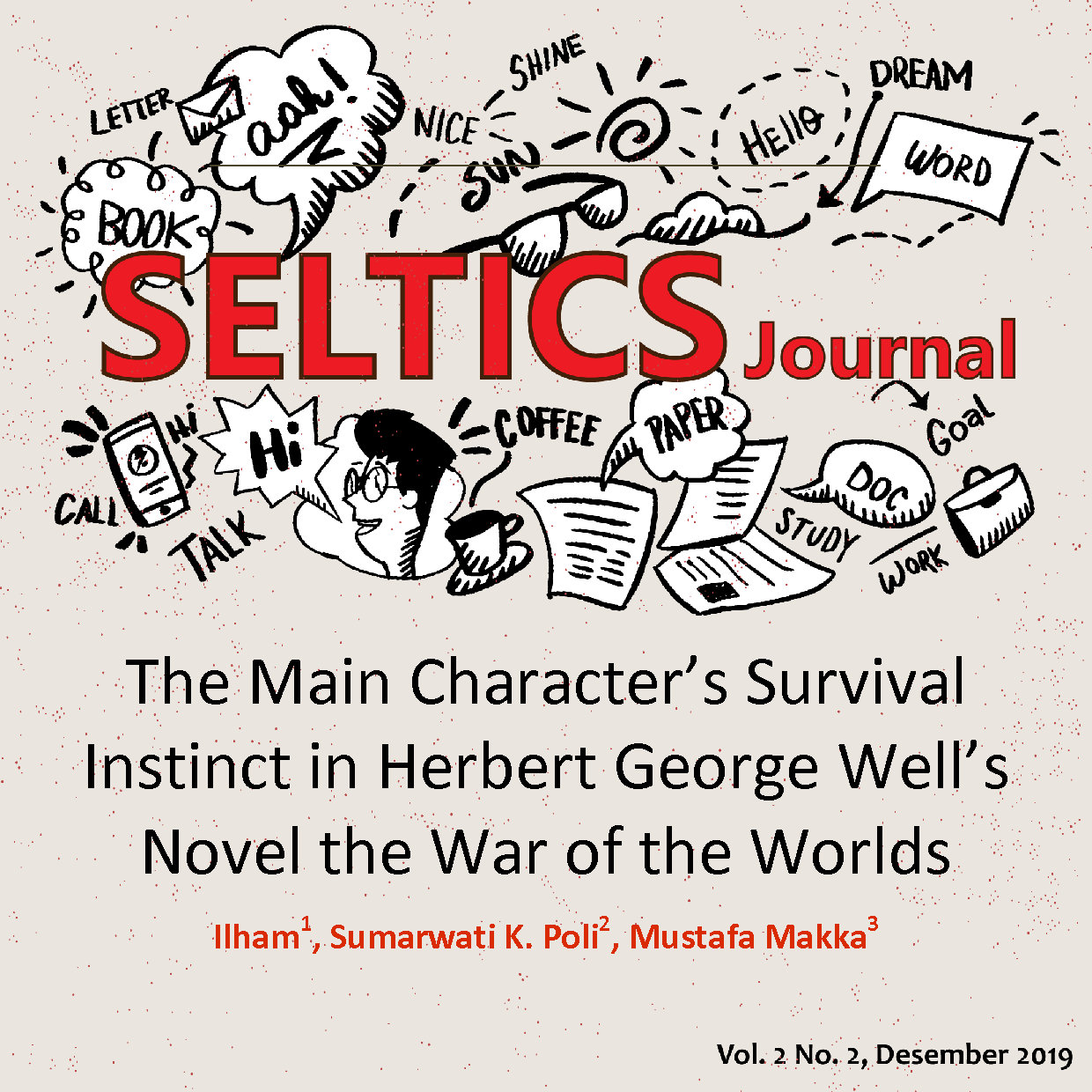THE MAIN CHARACTER’S SURVIVAL INSTINCT IN HERBERT GEORGE WELL’S NOVEL THE WAR OF THE WORLDS
Keywords:
Survival Instincts, The War of The Worlds, Herbert George WellsAbstract
One of the most interesting aspects of The War of the Worlds is the way in which the Martians are described, and the manner with which they take over the world. The aims of the study were to reveal the survival instinct of the main character in the novel “The War of The Worlds” of Herbert George Wells’s work, and how changes in behavior and the main character was currently in a state of urgency to survive. This study employed qualitative descriptive study with psychoanalytical approach initiated by Sigmund Freud, focused on literature as a reflection of real life. This research data were collected from the novel “The War of The Worlds” (1898). The study revealed that survival instinct of the main character of novel came from basic instincts, life instinct (Eros) and death instinct (Thanatos) according to Sigmund Freud’s theory. The Martians described as aliens invaded earth much more sophisticated than human, which made the main character who just a civil society striving to stay alive. The Martians had only one purpose, to destroy all humans and take over the planet. During The Martians invasion, the main character was not only trying to survive but also strived for source of food and water. In his effort to stay alive, the main character in the novel The War of The Worlds (1898) had to kill others to guarantee he stayed alive. Being trapped in regret and despair, he decided to end his own life, but something strange happened to The Martians, they were killed by bacteria. Human were immune to the bacteria, but The Martians from Mars were not and eventually died.
References
Blackman J.S. (2011). Defense Mechanisms in the 21st Century. Diakses November 22th 2015. Available from: http://www.psychiatry.queensu.ca/assets/.../Spring2011.pdf
Chapko B. (2010). Thus Spoke Zarathustra F. Nietzsche. Accessed on 22 November 2015. Available from: http://nationalvanguard.org/ books/Thus-Spoke-Zarathustra-by-F.-Nietzsche.pdf
Hastriawati. (2016). Self-Defense Mechanisms in Eugene O’Neill’s Long Day’s Journey Into Night (Tesis). Makassar: Hasanuddin University.
Hothersall D. (2013). History of Psychology, 4th ed. Accessed on 26 January 2016. Available from: https://www.verywell.com/ psychology-4014660
Minderop A. (2010). Psikologi Sastra, Karya Sastra, Metode, Teori, dan Contoh Kasus. Jakarta: Yayasan Pustaka Obor Indonesia.
Mutmainnah. (2015). Loneliness in James Tucker’s Ralph Rashleigh (Tesis). Makassar: Hasanuddin University.
Santana L. (2012). The Main Character’s Resistance in Jerome David Salinger’s The Catcher in the Rye (Tesis). Makassar: Hasanuddin University.
Thanki P. (2011). Time, Space and Fantasy in the Novels of H.G Wells, Arthur C. Clarke and J.K Rowling: A Critical Study (Tesis). Gujarat: Saurashtra University
Wellek R. & Warren. (1968). Theory of Literature. New York: Third edition, A Harvest Book Harcourt, Brace and World Inc.
Wells H.G. (1898). The War of The Worlds. Lexington: Tribeca Books.









